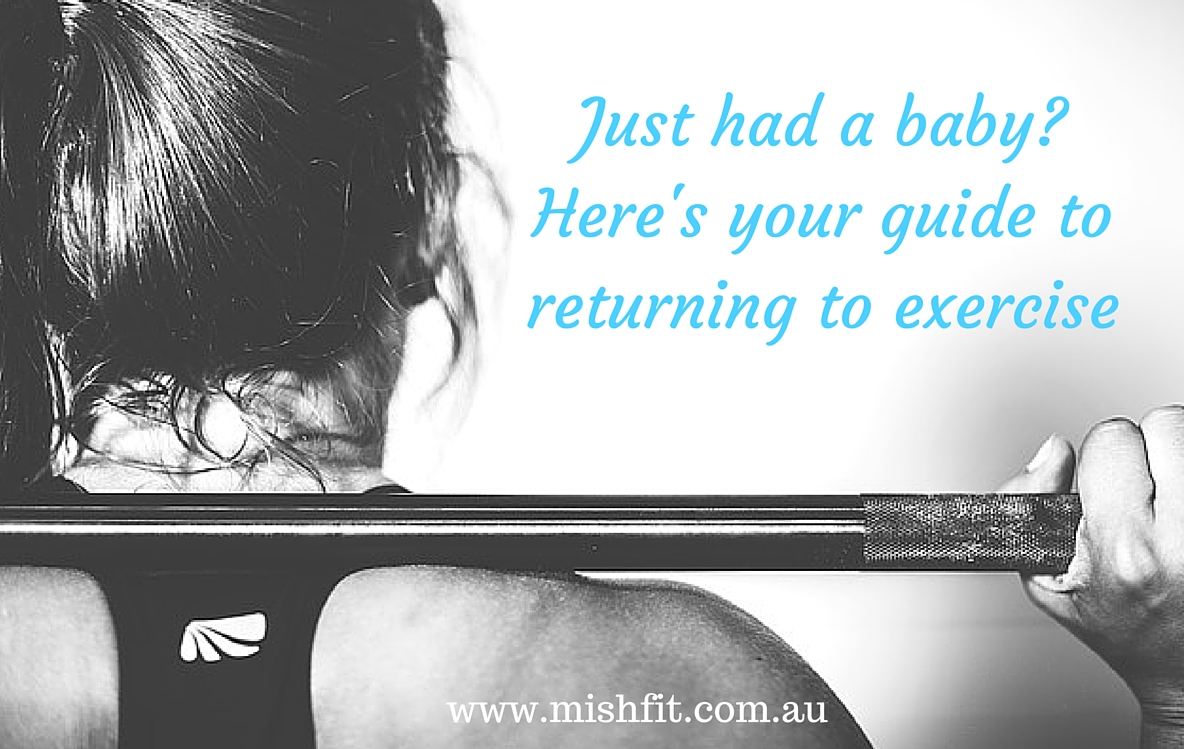All too often pregnancy and the early postnatal period is 100% focus on the baby. Your baby will grow and thrive with love and care, this should be the same for you and your body. Your welfare is just as important as your little person and getting the right advice at this time can save a lot of grief in the long term.
Here are some questions that I often get asked
- What exercise goal should I be focusing on?
Staying active! Research has shown that women who engage in regular physical activity significantly reduces risk of PND (University of Queensland May 2014)
Bonding with your baby – not boot camp! Even if you have no stitches and your birth was a breeze – you will still have soft tissue damage. We would not put our footballers back on the field with soft tissue injuries/stitches without rehab – so why should we do it to our postnatal women. #birthisacontactsport
Pelvic floor exercises – up to 30% of women think they are doing their pelvic floor exercises are in fact “bearing down” – get help with the specifics from a pelvic floor professional. Women’s Health Physiotherapists are a great place to start. One visit can positively impact on your on-going pelvic floor health for the long term!
2. What are the best 3 exercises I should be doing?
- Squats that engage your glutes (backside) not thighs (quads). You will be doing a lot of squatting, so practice engaging the right muscles. This will help with keeping your lower back injury free and help with pelvic floor function.
- Transversus abdominal exercises – these will not make you break into a sweat, but they will help with returning your belly to a flatter state and support your lower back too.
- Any pull or row exercise that counteracts the rolling forward of the shoulders that happens with feeding and holding a baby and creates upper back and neck aches and pains. Try a theraband hooked over a door handle and do a few each time you pass!
With all exercises, they should work with your breath. Exhaling on exertion will greatly minimise intra-abdominal pressure and pressure on your pelvic floor
3. What is the best workout that you would recommend?
Walking – every day – get out and have fresh air, its good for the baby, good for you!
And a specific exercise program from a professional that you have checked their credentials – Personal trainers who have had babies themselves is not good enough! A good rule of thumb is to see what questions they ask at your registration. If they don’t even ask about your pelvic floor or check to see if your abdominals have been split, give them a wide birth!
4. Is there anything I should avoid or not be doing?
Sit up, crunches and/or oblique twists – this will not promote healing of your abdominal muscles (Around 60% of postnatal women experience DRAM), nor give you a flat tummy. It may in fact make it worse.
High impact – jumping, running boot camp, cross fit. If you leak while working out, you need to pull back and train to your weakest link.
5. What are the most common exercise/fitness problem women have when they are early postnatal?
The biggest problem we have is not appreciating the time it takes to rest, recover and repair after birth.
Your training program should not be dictated by the age of your baby, but with how you have personally coped with the birth and postnatal recovery period. It is hard not to feel pressure to return to your pre-pregnancy clothes, but remember your body took 10 months or more to get where it is, be patient with its return.
Visiting a postnatal exercise specialist (with real credentials) is key.
Childbirth, obesity and inappropriate exercise prescription can significantly impact on chances of incontinence and /or pelvic organ prolapse (when the bladder, bowel or uterus falls through the vaginal opening).
Prolapse happens to around 50% of postnatal women. Yes, you read correctly! (Statistics from the Continence Foundation of Australia).
Women who experience prolapse often say:
The bulging feeling feels uncomfortable
Sometimes I can feel my prolapse rub on my underwear and this is uncomfortable
My prolapse has affected my sexual relations and/or how I view my body sexually
I feel like my body has let me down
My prolapse has affected my self-esteem
My prolapse stops me from exercising the way in which I would like to
Understanding and avoiding prolapse is essential in the postnatal period.
Fitness professionals are in a great position to ask the right questions, provide pelvic floor safe exercises and refer you to a specialist if you have concerns.
You might also like to read:
Finding Balance and Time for Activity
When can women return to high impact exercise after having a baby?
Top 10 tips for creating a body positive culture for you and your children









